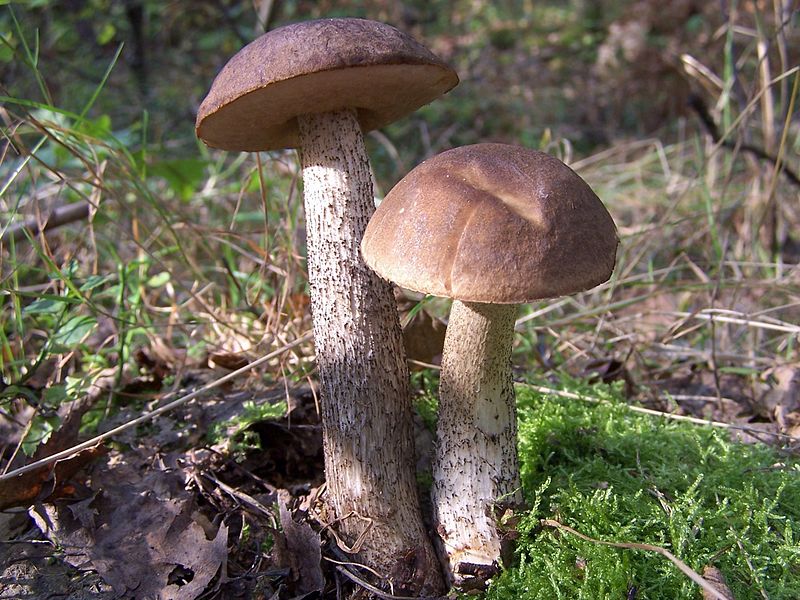Birch Bolete Identification – Leccinum scabrum
Heads up
The Birch Bolete, scientifically known as Leccinum scabrum, is an intriguing fungus with a few unique characteristics. The Birch Bolete thrives in association with birch trees, making it a common find in birch forests. If you’re in the woods between June to October, you might come across this fungus.
Birch Bolete: Key Parts in Photos



How to identify Birch Bolete
The cap ranges between 2-6 inches in width. Younger caps are hemispherical, but as the mushroom matures, it becomes flatter. It sports a brownish hue, generally with a lighter rim. While the cap’s skin is smooth and can sometimes appear shiny, it’s not sticky to touch.
Underneath the cap, you’ll find the pores, which are whitish when the mushroom is young. As it ages, these pores transition to gray. In mature specimens, the pores might bulge out near the cap but dent in near the stipe. This layer of pores can be peeled away from the cap’s skin.
The stipe is as long as the cap is wide, between 2-6 inches. The stipe is adorned with a mix of white and dark to black flakes and narrows towards the top. When you cut into the stipe, its flesh is white and might take on a pink hue, a handy identification feature.
The spore print of the Birch Bolete is olive in color. If you were to look at the spores under a microscope, they’d appear as narrowly ellipsoid shapes.
Want to learn more?

Disclosure: This post includes affiliate links. If you make a purchase through these links, we may earn a commission at no extra cost to you. We appreciate your support, as it helps keep this website running. Alternatively, you can search for the book title on Amazon if you prefer not to use the links. Thank you for your understanding and support!
